Punakha Dzong is one of the most picturesque fortresses in Bhutan. It is the second oldest and second-largest dzong of Bhutan, located at the confluence of two rivers – Pho Chu and Mo Chu. After the confluence of these two rivers, the main river is known as Puna Tsang chu or Sankosh River and eventually meets the Brahmaputra river in India.
About Punakha Dzong
Punakha Dzong is the administrative centre of Punakha District in Bhutan. Constructed by Ngawang Namgyal, 1st Zhabdrung Rinpoche, in 1637–38. Punakha Dzong was the administrative centre and the seat of the Government of Bhutan until 1955 when the capital was moved to Thimphu. It is still the winter residence of the dratshang (official monk body).
This dzong was also the site of the coronation of Ugyen Wangchuck (or Deb Nagpo) as the first Druk Gyalpo in 1907. Three years later, a historic treaty was signed here at Punakha whereby the British agreed not to interfere in Bhutanese internal affairs.
The royal wedding of the Druk Gyalpo, Jigme Khesar Namgyel Wangchuck, and his fiancée, Jetsun Pema, was held at the Punakha Dzong in 2011.

Outside Punakha Dzong
As the dzong is on a small river island, to enter inside you need to cross the river. The access gate is on the east side of the dzong on Thimphu-Punakha Highway. A wooden cantilever bridge over Mo Chuu connects it with the main road. This bridge was originally built together with the Dzong in the 17th century. But got washed away by a flash flood in 1957. Another new wooden bazam bridge made in the same traditional style, with a free span of 55 metres (180 ft) replaced the old one in 2008.
Read More : My guide to hike Taktsang (Tiger’s Nest) Monastery in Paro, Bhutan
Across the Bridge
Once you cross the bridge you will enter the sprawling green lawn around the dzong. Plenty of Jacaranda trees stand tall in front of the lofty walls of the dzong. During spring these trees gets covered with lilac colored Jacaranda flowers and makes the view of the dzong magical from outside.
A memorial has been erected just outside the dzong, honouring the people who died in the dzong in the glacial floods in 1994. Towards the north of the dzong, there is a cremation ground marked by a large chorten. And most importantly the Royal Palace is situated on the east side of the dzong.


Architecture of The Dzong
The dzong measures 180 metres (590 ft) in length with a width of 72 metres (236 ft) and has three docheys (courtyards). In addition to its strategic location this dzong has several other features to protect it from invasion. The entry to the dzong is by a wooden stairway which can be pulled up when not in use, and a heavy wooden door which still remains closed at night. A large prayer hall was placed just outside entry door when this dzong was damaged by fire in 1986 .
From outside it looks massive with inward sloping walls painted in white with few or no windows in lower sections of wall and a broad red ochre band at the top. The roof is constructed with wood and bamboo, highly decorated at the edges, and constructed traditionally without the use of nails. Moreover they are open at the edges to provide a ventilated storage area.
Inside the dzong, it is divided in two separate areas: the administrative offices; and the religious functions – including temples and monks’ accommodation. Similarly main internal structures are again built with stones and earth and whitewashed just as outside of dzong.
The materials used to build doors and windows are stone and timber, not a single joint or nail was used to make these massive structures.



Inside Punakha Dzong
First Courtyard (Dochey)
There are three couryards inside this dzong, first one being the largest, is surrounded by administrative offices. A large, white-washed stupa and a bodhi tree in the center, make this courtyard more visually appealing of all three. On the far left, there are a mound of stones and a chapel, dedicated to the queen of the Nagas. Domche, the annual Punakha festival, takes place in this courtyard.
Second Courtyard (Dochey)
The residential quarters of monks are located in the second courtyard, with the utse standing tall in between the first and the second courtyards. There are two historic halls in this courtyard; one of Ugyen Wangchuk, who subsequently became the King. And another hall where the King was decorated in 1905 with the Order of the Knight Commander of the Indian Empire by John Claude White.
The six-storied structure with a central tower, called as utse has an average elevation of 1,200 metres (3,900 ft). It possess Bhutan’s most precious treasure – Rangjung Kharsapani, an image of Chenrezig (Avalokiteswara) that was brought to Bhutan from Tibet by Zhabdrung. It is closed for public except during Dromche when it is taken out and exhibited for people of Bhutan.

Third Courtyard (Dochey)
In the last courtyard, there is a temple. This temple holds the remains of the terton, Pema Lingpa, and Zhabdrung Ngawang Namgyal, making it very auspicious for Bhutanese people. The Zhabdrung died in Punakha Dzong, and his body is still preserved in the Machey Lhakhang. Other than two guardian lamas, only The King and Je Khenpo (head of the religious body in Bhutan) may enter this room to take blessings.
Kunrey or the Assembly Hall is in the southern end of last courtyard. It features massive statues of Buddha, Guru Rinpoche and Zhabdrung. It has some exceptional murals inside, which were commissioned by Druk Desi (used to be head of civil administration in dual power system of Bhutan), depicting the life of Buddha.
Entry in Punakha Dzong
Time
- Summer 8:30 am – 5 pm
- Winter 11 am – 5 pm (closed from 1 pm – 3 pm)
Fee
- 300 Nu for Indians
- 150 Nu for students (Carry your student ID)
- Guide: Included with Entry fee
How to Reach
Punakha is 85 km from Thimphu and 128 km from Paro. It takes around 3 hours from Thimphu. The road goes via Dochula Pass which is the 2nd highest motorable road in Bhutan. You need a restricted area permit to visit Punakha. The permit has to be obtained from Thimphu Immigration Office. For details, you can read my blog post here.

Where to stay
I stayed in Damchen Resort in Khuruthang. It’s a beautiful resort right beside Punakha Chuu. You can also get pampered by the luxury of Amankora and COMO Uma in Punakha.
Festival in Punakha Dzong
Punakha Dromche or Drubchen is the annual festival that is celebrated every year for 5 days. It was first introduced by Zhabdrung to commemorate the victories over the Tibetans.
Punakha Tshechu is celebrated after Drubchen for another 3 days. It was started in 2005, in keeping with Dzong and monastic traditions of Bhutan and upon request of the public.
Punakha Dromche festival is unique for being the only festival with a procession that re-enact the war against Tibetan in the 17th century. Dromche generally include dances and this festival is dedicated to Yeshe Gompo (Mahakala) or Palden Lhamo, the two main protective deities of Drukpas (Drukpas = means people of Druk land or Bhutanese).
Punakha Dromche takes place in the first month of the lunar year (usually in last week of February or 1st week of March).
Other Places to See in Punakha
Punakha Suspension Bridge
Chimi Lhakhang
Khamsum Yulley Namgyal Chorten
Tips to Remember
- Punakha dzong looks majestic in summer when Jacaranda flowers are in full bloom.
- A short drive further north or south of the dzong after the gate closes gives the opportunity to get some beautiful photos of the dzong in the golden hour with the river in front and mountains in the backdrop .
- There is a small cafe just opposite the cantilever bridge. Hang around meanwhile the lights are switched on inside the dzong. Certainly, you will be astonished to witness the magnificent view of this dzong at night.
- Photography is allowed inside except in the temple in the third courtyard.
- Wear full covered clothes while entering the Dzong.


















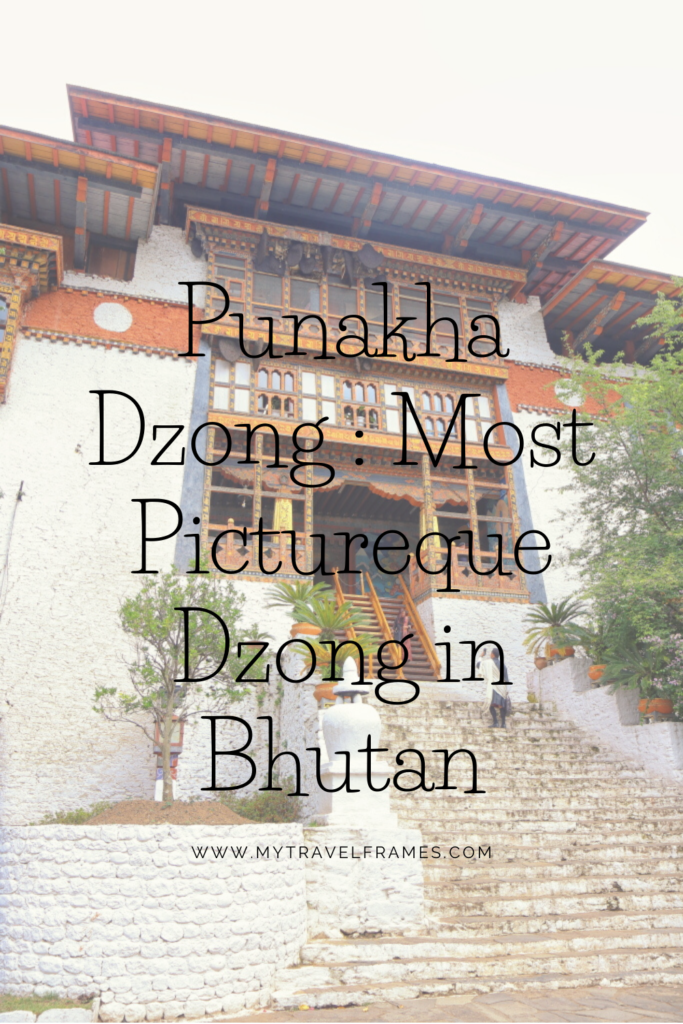
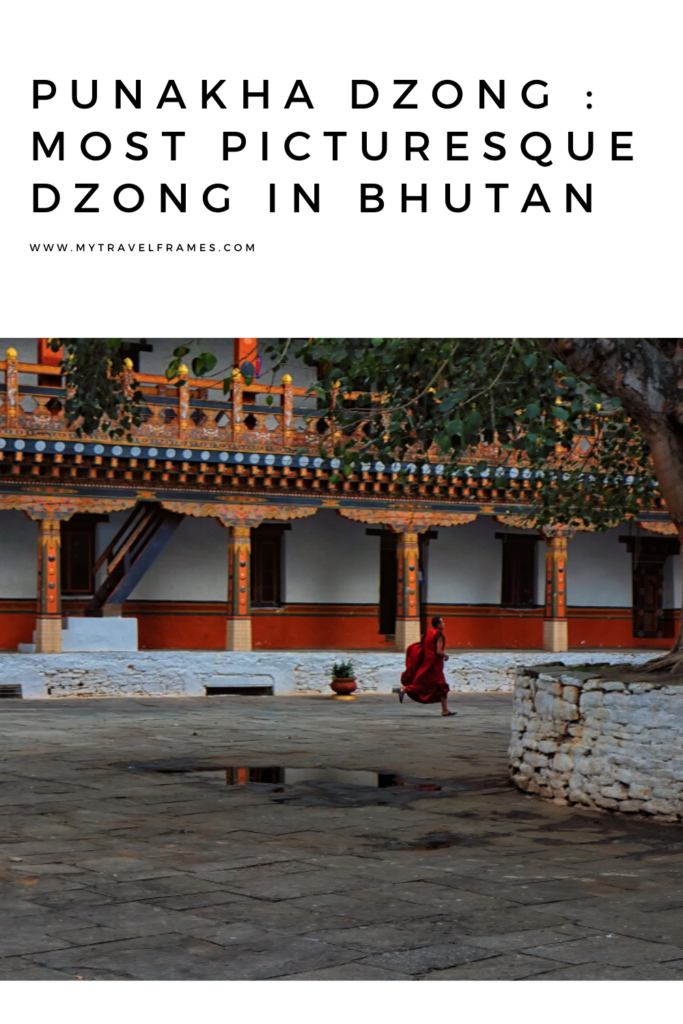
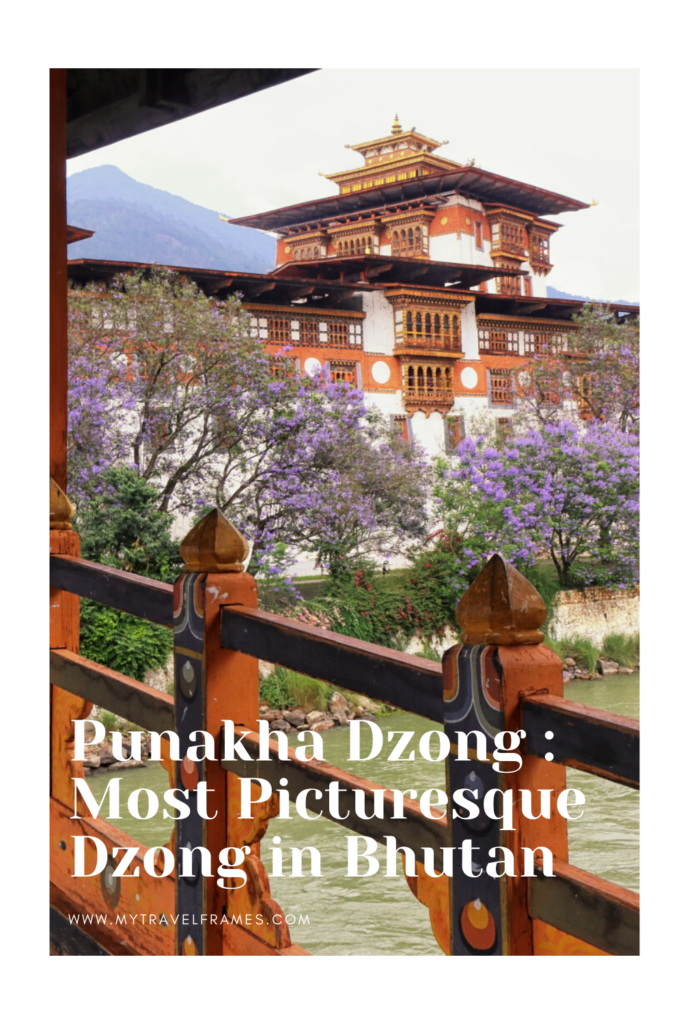
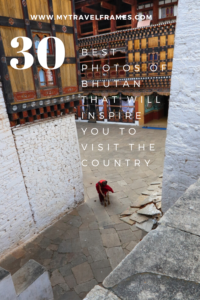
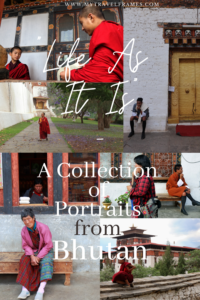
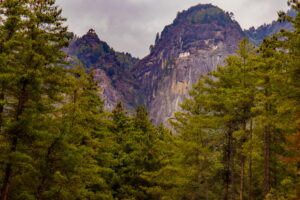
Wooow! What a truly gorgeous setting, especially when those Jacaranda trees are in flowers. he architecture of Dzong. I have never seen anything quite like it.
Yes, Sandy and Vyjay, all those legends and myths what make these monasteries more enchanting.
It looks like such a beautiful and tranquil place. Bhutan is still on the ‘too expensive’ list for me, haha.
Yes it is. 🙂
Bhutan is high on our bucket list! We almost went there last summer, but ended up trekking along the ancient Silk Road in China, which was also fantastic of course! We hope to visit Bhutan when it’s safe to travel by plane again. It’s good to know that Jacaranda flowers bloom in summer, as we usually travel to faraway destinations only during summer.
Yes you should plan your visit in summer and don’t miss trekking to Tiger’s Nest. You will love it.
Punakha Dzong is so beautiful. It seems to be enveloped in a mystical aura that is so typical of Buddhist monasteries. A place as charming as it can get.
Bhutan has been on my list since post grad when a few of my friends went there for a grad trip! Punakha Dzong looks absolutely fascinating – the architecture is beautiful. Hope I make it there soon!
My best wishes with you 🙂
Thanks for the interesting article! The fortress looks lovely! Unfortunately I can’t visit Bhutan on my own, the only way is to book a licensed tour guide. It’s only open for India and two other countries. So it’s not at the top of my list, but maybe this policy will change with years 🙂
Yes, that is what restricts many travellers from visiting this country. Hopefully they will change the policy soon to make things easier for citizens of all the countries.
This place looks beautiful! I think I would definitely like to visit in the summer to see the flowers in full bloom!
Yes, undoubtedly summer is the best time to visit Punakaha Dzong.
It looks very peaceful and the architecture is real beautiful. Bhutan is still on my list of must-see destinations.
Plan your visit on your next trip to south Asia.
Great post and very detailed. Love you pictures as well, especially the second one (which I saw on Instagram as well! )
Thank you
Loved reading about Punakha Dzong and all of your details and photos really brought it to life.
Thank you Jamie